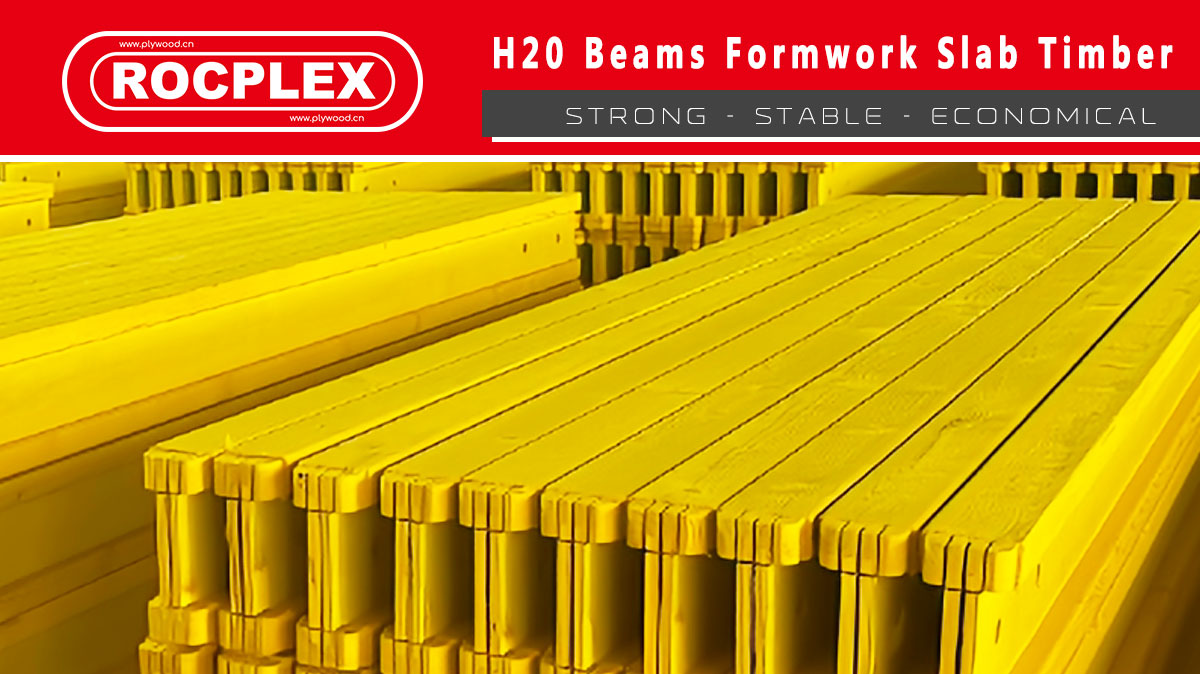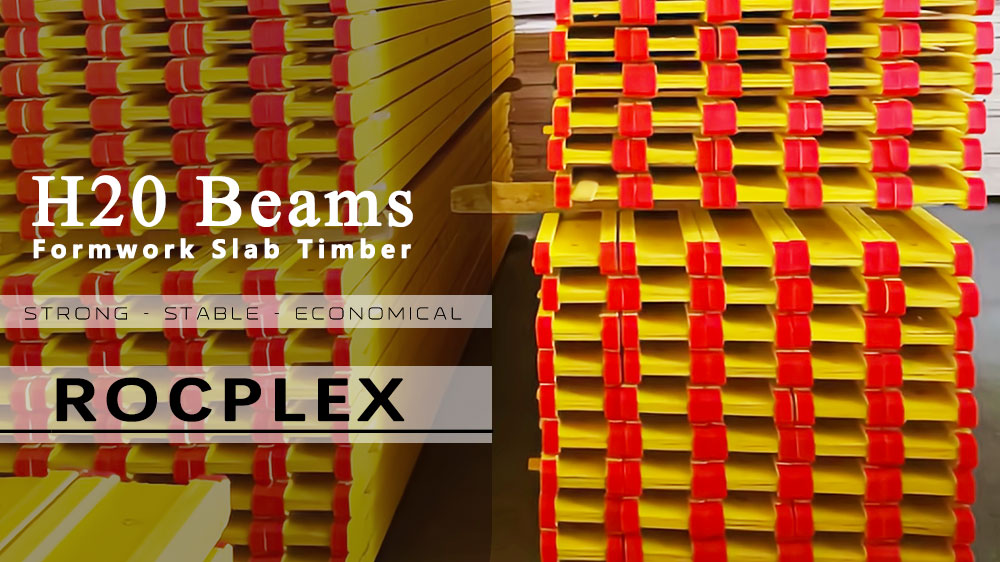What is Formwork Beam?
Formwork beams are essential components in construction, facilitating the molding and setting of concrete structures. These beams form a part of temporary or permanent molds into which concrete is poured. Formwork beams, especially variants like formwork H20 Timber Beam, h20 Wood beam, and Wood H Beam, are admired for their strength, flexibility, and adaptability in various building scenarios.
The Evolution and Advantages of Formwork Beams in Modern Construction
Historical Development and Contemporary Use
Formwork beams have evolved from basic wooden supports to sophisticated systems incorporating various materials and designs. Modern formwork beams, including the formwork H20 Timber Beam and h20 Wood beam, are designed for efficiency and versatility, accommodating a wide range of construction needs.
Enhancing Construction Efficiency
The use of formwork beams streamlines the construction process, allowing for faster, more precise, and safer building methods. They enable the quick assembly and disassembly of formwork, significantly reducing construction time and labor costs.
The Role of Wood in Formwork Beam Technology
Innovations in Wood H Beam
The Wood H Beam represents a significant advancement in formwork beam technology. Its ‘H’ shaped profile provides exceptional strength and stability, making it ideal for supporting large structures. The Wood H Beam’s versatility and durability have made it a popular choice in both residential and commercial construction.
The Advantages of Timber and Wood Beams
Timber, including the h20 Wood beam, is widely used in formwork systems due to its natural strength and flexibility. These materials are not only robust but also environmentally sustainable, aligning with the construction industry’s growing focus on green building practices.
Integrating Formwork Beams in Diverse Construction Projects
Versatility Across Various Structures
Formwork beam are adaptable to a wide range of construction projects. From intricate architectural designs to massive infrastructure projects, they provide the necessary support and flexibility required for diverse building requirements.
Enhancing Safety and Structural Integrity
The structural integrity provided by formwork beams is crucial for construction safety. These beams ensure that the concrete structures are accurately shaped and securely supported during the curing process, preventing structural failures and enhancing overall building safety.
Sustainable Practices and Environmental Impact of Formwork Beams
Eco-Friendly Construction Solutions
The use of formwork beams, particularly those made from sustainable materials like wood, significantly contributes to eco-friendly construction practices. The production process of these beams, especially the H20 Wood beam and slab H20 beams, often involves sustainable forestry and recycling methods, which reduce the environmental impact of building projects.
Reducing Carbon Footprint in Construction
By opting for wood-based formwork beams, the construction industry can significantly reduce its carbon footprint. Wood, being a natural carbon sink, helps in offsetting the overall carbon emissions associated with construction activities. This environmental benefit is crucial in the global effort to combat climate change.
Technological Advancements in Formwork Beams Design
Innovations in Material Engineering
Continuous advancements in material engineering have led to the development of more durable, efficient, and adaptable Slab H20 beams. These innovations include improved wood treatments, composites, and hybrid materials that enhance the performance and lifespan of formwork beams in various construction environments.
The Future of Formwork Beams Technology
Emerging technologies, such as AI-driven design and automated manufacturing processes, are set to revolutionize formwork beam production. These technologies promise to deliver more precise and customized formwork solutions, catering to the evolving needs of the construction industry.
Economic Implications and Market Trends in Formwork Beam Usage
Cost-Effectiveness and Market Demand
Formwork beam, known for their cost-effectiveness, have seen a surge in demand within the construction industry. Their ability to reduce labor and material costs makes them an attractive option for builders and developers, contributing to their growing popularity in both residential and commercial construction.
Formwork Beams Global Market Analysis
The global market for formwork beams is expanding, driven by increasing construction activities worldwide and the rising demand for efficient and sustainable building solutions. This trend is particularly noticeable in regions experiencing rapid urban development and infrastructure growth.
The Role of Formwork Beams in Revolutionizing Construction Techniques
Facilitating Complex Architectural Designs
Formwork beams have been instrumental in bringing complex architectural designs to life. Their flexibility and strength allow architects to push the boundaries of creativity, enabling the construction of intricate shapes and expansive structures that were once deemed impossible.
Impact on Construction Speed and Efficiency
The efficiency of formwork beams, particularly in terms of installation and removal, drastically reduces construction timelines. This efficiency is not just about speed; it’s about precision and the ability to maintain high-quality standards throughout the construction process.
Educational and Professional Development in H20 Beam Technology
Enhancing Skills and Knowledge
With the increasing use of H20 beam in construction, there’s a growing need for specialized education and training in this field. Academic and vocational programs are now focusing more on modern formwork technologies, equipping the next generation of construction professionals with the necessary skills and knowledge.
Professional Workshops and Certification Programs
Professional development opportunities in formwork beam technology, including workshops and certification programs, are crucial for construction professionals. These programs provide insights into the latest trends and techniques, ensuring that the industry keeps pace with the evolving technology.
FAQs on Formwork Beams
What is beam formwork?
Beam formwork refers to the temporary or permanent molds into which concrete is poured to form beams in a building. It’s designed to shape and support concrete until it attains sufficient strength to bear loads.
What is timber formwork?
Timber formwork involves using timber or plywood to create molds for pouring concrete. It’s a traditional formwork method, known for its versatility and suitability for various shapes and sizes.
How do you read H-Beam size?
Reading an H-Beam size involves understanding its height, width, and weight per unit length. The dimensions are typically mentioned in millimeters or inches, indicating the beam’s overall size and structure.
What is the difference between H-Beam and I-beam?
The main difference lies in their shape and weight distribution. H-Beams have a thicker center web, making them structurally stronger and better suited for bearing heavy loads. I-beams have tapered edges and are often used in smaller load-bearing applications.
Formwork Beams: Pioneering Future Construction Practices
Formwork beam, including the formwork H20 Timber Beam, H20 Wood beam, and Wood H Beam, have undeniably set new benchmarks in construction. Their role in modern building practices goes beyond mere functionality; they are reshaping how we think about, design, and execute construction projects. As we move forward, formwork beams stand at the forefront of innovative, sustainable, and efficient building, heralding a new era in the construction industry.
Post time: Apr-04-2025




